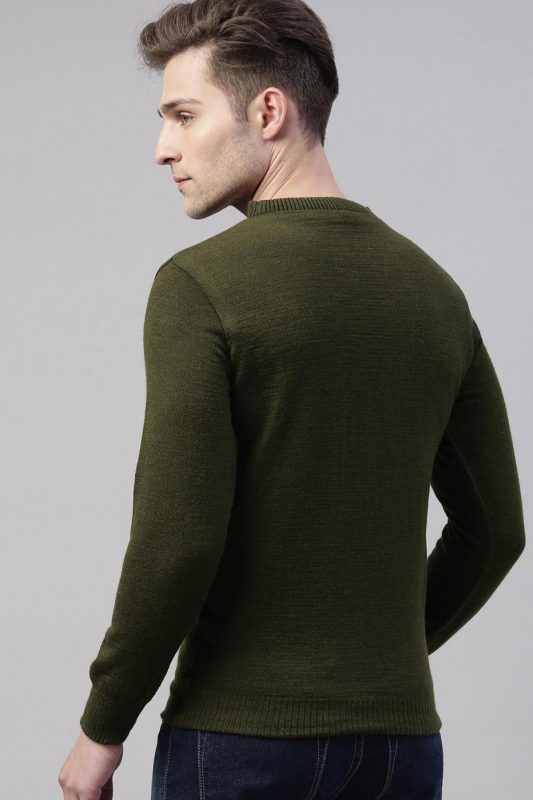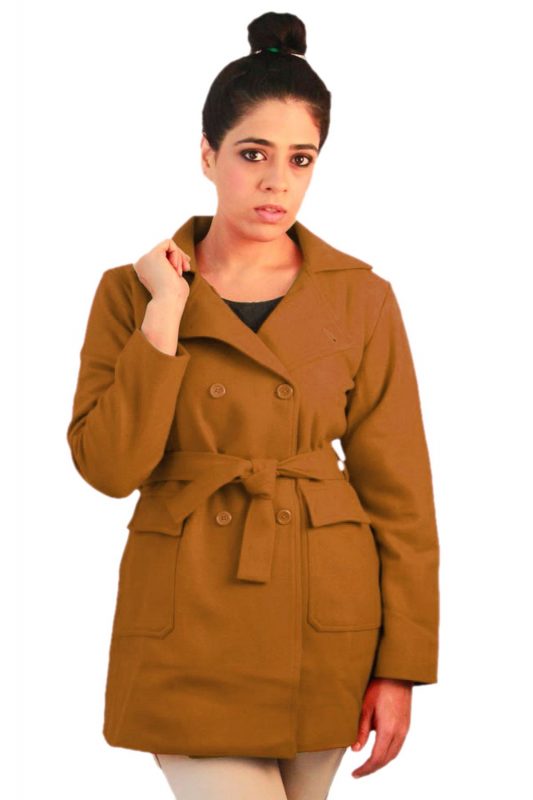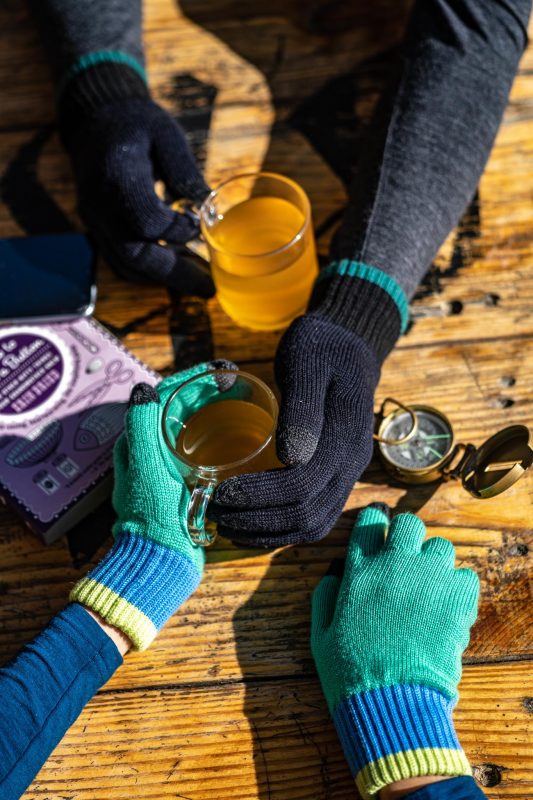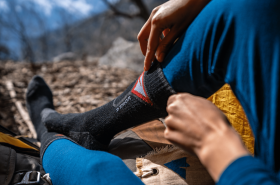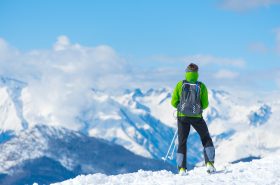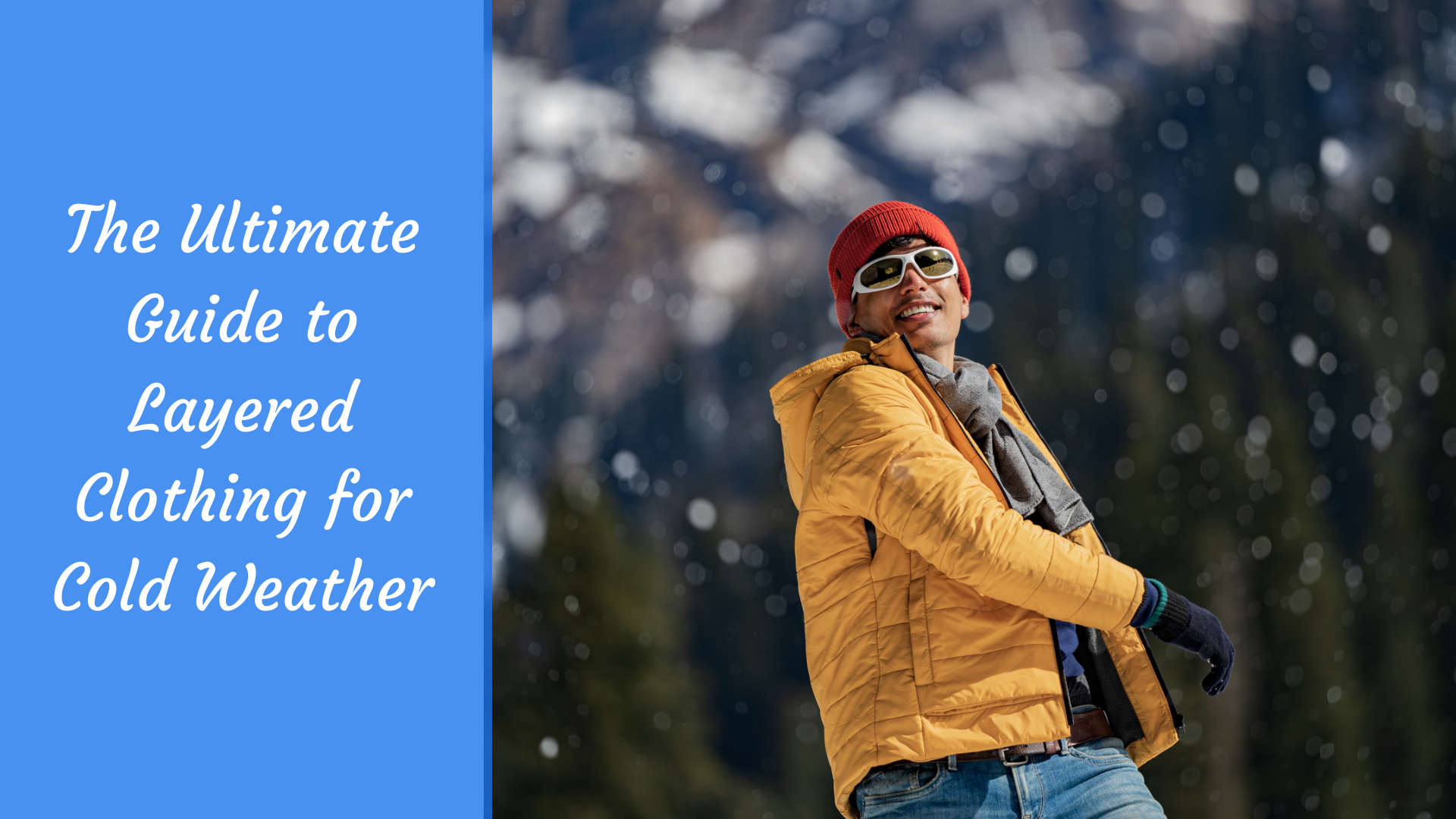
Winter isn’t the season you can get by. In any winter weather, you need suitable clothing for cold weather. Countries such as Switzerland, Russia, Slovenia, Alaska, and the Nordic countries have cold winters.
If you’re a travel enthusiast like I am, you would want to visit these places during the winter season.
Winter wear brings with it a plethora of diverse garments. In regions of freezing weather, staying warm should be your topmost priority. For such visits, you must know your winter gear.
Proper layered clothing for cold weather is what matters the most. It’s only natural that the question of ‘How to layer clothing for cold weather?’ might arise. Read away to find your answers to these questions!
Table of Contents
The Need for Layered Clothing for Cold Weather
You must fully equip yourself for freezing temperatures. You need to shield yourself from any winter.
There can be dry winters, hail storms, snowstorms, or even rains. You also need to wear suitable clothing for cold weather when you experience ‘windchills.’
It’s observed because the chilly breeze adds to the amount of cold that is felt. During this time, the temperature feels lower than it is.
You must note down the places that experience wind chills and then pack winter gear suitable for lower temperatures than expected.
Layering is crucial to keep yourself insulated throughout your trip. Four main types of layers are:
- Base Layers
- Mid-Layers
- Outerwear or Shell Layers
- Winter Accessories
Many determinants, like the kind of winter weather expected, wind chill factor, and proximity to a water body, lead to the selection of proper layering.
If you’re a beginner to layering, start adding layers as and when the temperature goes below 10 °C. It’s recommended to put on all four layers as soon as the temperature drops below 0 °C.
But it also depends on your resistance to cold weather. Believe me, as a person that has seen only Mumbai’s winters. I would start with all four layers pretty sooner than the others!
Clothing for Cold Weather: Ideal Fabrics
When it comes to winter layering and icy regions, ensure you’re aware of the various materials that make these layers. You can decide on your ideal fabric once you know the weather in the place and the suitable clothing for it.
Base Layer
Base layers form the innermost lining of your winter layering system. This layer is essential. Merino wool is the softest material that provides maximum warmth and comfort. It’s also very lightweight and compressible for easy packing.
Sometimes in winter, the sun comes out. This causes the temperature to rise. Similarly, when you come across rain, the temperature dips and the weather becomes chilly.
In both these cases, wearing a temperature-regulating base layer is a huge plus point. It should be such that the layer can handle warm indoors and cold outdoors as well.
After all, it’s the first layer in your winter layering system. And hence, you cannot remove it easily.
At Kosha, two years of research led to the development of a fabric that doesn’t itch like the traditional woolen thermals. Along with this it also regulates the temperature between the hot and the cold.
Mid-Layer
The mid-layer comes after the base layer. For this layer, clothing should be lightweight and not restrict your arm movement.
As for the fabrics, you must go in for warm materials in temperatures below – 5 °C. Your options could be wool, synthetics, or fleece. The last one is a common choice for mid-layers.
You shouldn’t undermine the value of mid-layers in your clothing for cold weather. After all, it’s the heat trapped between the base and mid-layer that blocks the body heat from escaping.
Some of the examples for merino wool would be:
- Merino Wool or Synthetic Pullovers
- Nice and Stylish Skivvies
- Sweatshirts With a Zipper
- Hoodies
You can opt for a sleeveless mid-layer in case your jacket sleeve is insulated, and you’re wearing a full-sleeve thermal. This gives your arms the freedom to move with comfort.
Outer Layer
As its name suggests, outerwear forms the outermost layer of winter apparel. Based on the purpose of your visit, decide on the most suitable material.
This layer is also known as the “shell layer.” It’s because of the shell that protects you from snow, wind, and rain.
You can wear a woolen coat in dry winter conditions. Woolen coats are also ideal options for stylish streetwear. These coats can also come along with you for a formal outing like a business trip.
In snowy and damp conditions. It’s advisable to carry a waterproof and snowproof all-weather jacket. Ensure that your jackets are always graded for a temperature range to ensure warmth.
A really warm jacket would be covered in two to three layers of insulation. Along with that, you would also see a hood attached to it. These hoods are often lined with either faux fur or fleece. It provides that extra layer of warmth for your head.
Often winter coats might look warm but are only meant for style. Hence, you must ensure that your coats are graded for a temperature range.
There are numerous things to consider before choosing the type of outerwear:
- Luggage space
- Compressibility of the jacket
- The breathability of the layer
Accessories
When it comes to accessorizing, choose something that has the maximum utility for you. Winter gloves, socks, scarves, mufflers, beanies, shawls, stoles, and mittens are available for accessorizing.
You must bear in mind the purpose of your trip. Please don’t forget to carry good quality winter gloves while skiing or snow hiking. Here again, look out for winter-appropriate accessories.
The gloves can be woolen or nylon made. Choosing comfort and utility over the rest will allow you to make better decisions.
The Layered System of Clothing for Cold Weather
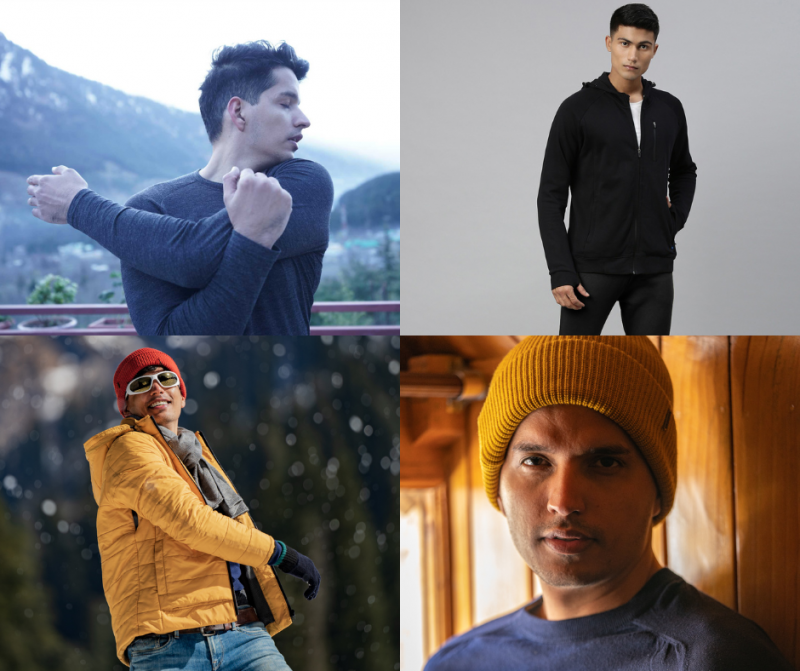
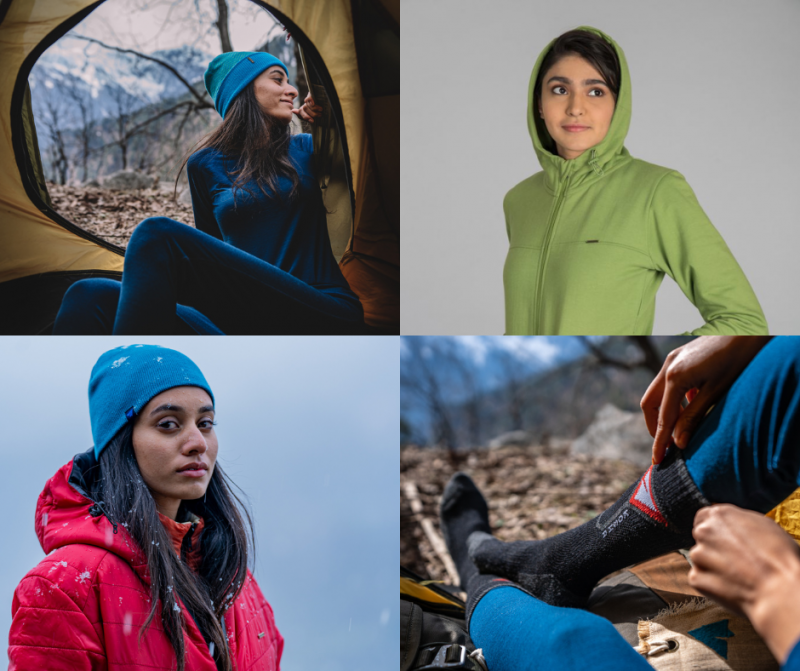
So by now, you must’ve understood that you have four main layers- base, middle, outer, and accessories, These are named in the order you’re supposed to wear them.
Base Layers
Base layers are usually worn inside regular clothing. As mentioned earlier, they form the layer closest to your skin. Base layers are skin-tight. A base layer’s primary task is to ensure they don’t let any cold air seep through gaps.
These base layers ensure that your body heat is preserved. It acts as a barrier and stops the body heat from escaping. Pair these with the rest of the layers for warmth and insulation. in extremely cold places.
Base layers come in tops and bottoms. If you choose a base layer as a winter top, wear it directly as a top or a t-shirt. This would be a great casual outfit for any outing in pleasant winter.
Mid-Layers
Mid-layers are worn over your regular clothing. They include hoodies, pullovers, zipper jackets, sweater vests, and so on.
They usually give the person much breathing space and are generally not skin-tight.
For an air-conditioned room or a casual chilly day, pair these with your regular clothing, and you will be good to go. Choose a mid-layer that is made of soft skin material. Cotton works well for this layering.
Make sure the mid-layer garment you choose is tight towards the cuffs. It’s to ensure that no air seeps in. I am the sort of person who likes pockets in hoodies or jackets. If you’re a hoods fan, make sure the product you choose has a lightweight hoodie.
In the case of icy climate conditions, it’s key that the mid-layer is compressible and lightweight. It’s because the middle layer will have little space to occupy. Hence, choose something light yet effective.
Outer Layers
Outerwear or shell layers provide the maximum amount of warmth. They generally carry some weight and are less compressible than the other two layers. Fur, faux fur, nylon, polyester, and fleece are used.
Snow or skiing jackets use nylon. These jackets are meant to be used for low temperatures. The jackets you wear should be chosen based on your resistance to cold.
On that basis, these jackets should be used in the temperature range of 15 degrees Celsius to -20 degrees Celsius when worn with layers.
All the mentioned layers can provide insulation in even lower temperatures. Make sure the outerwear you choose is breathable and allows a free flow of movements.
Features like these would be an added benefit:
- A Hood (possibly detachable)
- Ribbed Cuffs
- Pockets at the side and on the inside (to protect important stuff from snow or water).
- Underarm vent zips for breathability
As this will form the outermost layer, make sure that it’s made of good quality and is durable. A material that’s snowproof, windproof, and waterproof will be a good choice. It also increases the scope for reusing the item.
Accessories
You must give as much importance to your accessories as to the other layers. They too can come in handy in extreme winter temperatures.
For example, beanies must cover your ears along with your head. It prevents any chances of cold wind passing through. In turn, this will keep you away from the cliched winter cold.
Similarly, gloves can be very useful to prevent your fingers from freezing. If you want an alternative, you will also find mittens to keep your hands protected.
If you want to keep your neck warm, choose mufflers. a woolen scarf, infinity scarves, or a balaclava. Apart from this we also tend to lose heat from the soles of our feet. So if you want to protect your feet during the cold winters, wear woolen socks.
These are some examples of functional winter accessories. The nut also remembers that accessories can look stylish on an outfit. For that, you could buy a beret, hand warmers or leg warmers as some options.
Tips to Choose the Layered Clothing for Cold Weather
Choosing a Base Layer
The first step towards having the most insulation providing winter wear would be choosing a good base layer. Base layers can be categorized and then sub-categorized based on their fabric, feel, and type of item.
Base layers can also be made out of thermal materials. Merino wool is the most renowned fabric for base layers. It is soft,moisture-wicking, and warm and guarantees the required protection.
Merino wool gets its name from the Merino sheep breed. Merino wool is the most sought-after winter base layer material.
Materials like nylon provide the necessary warmth but can tend to be a little uncomfortable as they tend not to provide the essential breathing space for the user.
People still associate winter clothes with discomfort due to the lack of information about these effective and comfortable alternatives.
Kosha has base layers that are as stylish as they are effective. In case of light cold, you can wear Kosha’s thermal tee base layer directly as they double up as t-shirts.
These thermal base layers are made from a combination of merino wool and bamboo.
This unique mixture was formed due to feedback mentioning how base layers made of just merino wool are itchy. Kosha came up with a solution to this concern after two years of research.
The research led to the development of a fabric blend that has the following features:
- Removed the itch of traditional woolen clothing
- The material was temperature-regulating
- Doubled up as a t-shirt and hence reducing the number of layers you wear
bamboo to it. This aspect made the product stronger and made the issue disappear.
Often we tend to neglect the value of base layers as winter wear and consider only jackets to be sufficient for warmth. But unfortunately, that isn’t the right way to approach winter clothing.
It’s the base layer that’s capable of blocking body heat. Hence for temperatures. Hence for temperatures below 8 or 10 °C, carry a base layer or a thermal top.
You can contact us on +91 98 20999006. Our winter wear expert will be happy to help you with a free consultation on winter layering.
Choosing a Middle-Layer
Mid-layers are a staple in all our winter wardrobes. Irrespective of where we live, everyone has at least one sweatshirt, cardigan, pullover, or hoodie in their closet.
Some of them might be long forgotten in your collection. But when it’s winter time, you would be happy to know that you have them available when need be.
While choosing mid-layers, you must consider the following aspects:
- Warmth
- Style
- Arm Mobility
If you want to incorporate all three factors together, you must choose wisely. Warmth will come with the right fabric choices. Style is subjective from person to person.
But there is a great variety available for you in the winter market. It could be attractive colors or patterns on the mid-layers that attract and suit your fashion sense.
Lastly, whatever you choose should provide comfort along with warmth. If you feel uncomfortable in the clothes you wear, you’ve not picked well.
As for the mid-layers, arm mobility is a huge factor to consider. This point is also mentioned in an earlier segment.
The reason is simple. Your mid-layer is sandwiched between the base and outer layer. And sometimes, you might prefer wearing two mid-layers over the base.
In such cases, avoid wearing bulky layers of clothing. You won’t get much breathing space and freedom of movement if you don’t pick suitable fits and sizes.
If the temperatures range between 10 to 15 °C, you can wear mid-layers made with cotton or synthetic fabrics. But if the temperature drops below 5 °C, merino wool is highly recommended. It will provide you with much-needed warmth.
Choosing Outer Layers
As mentioned earlier, outer layers, shell layers, or outerwear form the outermost coating for any winter apparel. Having outerwear that helps you shield yourself from the cold is necessary.
A breathable material that’s waterproof, snowproof, and windproof is required. Places experiencing harsh winters also experience snowstorms, hail storms, etc.
The outerwear’s primary purpose is to shield the person from these extreme weather conditions.
Such an important task can only be assigned to particular materials or fabrics.
Finding outerwear that’s comfortable yet compressible and easy to carry is a difficult task.
Kosha’s range of outerwear is available in puffers and parka ranges. There are skiing jackets made from nylon, cotton hosiery, and puffer jackets made from fleece and parkas.
The temperature in which they can be used ranges from 10 °C to as low as – 20 °C, depending on how they are used.
Most of these jackets come with a detachable hood, as that is one additional element for insulation provision.
Depending upon the place and time of visit, along with one’s resistance to cold, suitable outerwear can be chosen. These jackets serve different purposes and hence need to be chosen carefully.
For instance, the nylon jacket will work very well for winter activities like skiing and snow hiking. Kosha’s 4-in-1 winter jacket is made up of a material that is a combination of cotton hosiery and nylon. It’s reversible and has a detachable hood.
Fleece-lined puffer jackets are very stylish in their appearance and appropriate for any winter visit. They are snow, water, and wind-resistant and come with ribbed cuffs and a detachable hood.
Parkas are another attractive option for suitable outerwear. And it fits perfectly as clothing for cold weather too. Kosha’s range of parkas is user-friendly with snowproof, windproof, and water-resistant material.
There’s a detachable hood and a fur layer for warmth, with two cross pockets, a frontal zip, and a button flap. This jacket is slightly longer than the other jackets and comes to mid-thigh length.
Kosha’s winter range is also very appealing to the eye while being comfortable and insulating. This outer shell is a must if you are a frequent traveler and tend to visit places of extreme winters.
Choosing Accessories
Winter accessories are also a key component in your list of clothing for cold weather. The exposed areas of the body, like the neck region, the hands, feet, and ears, need protection from the chilly winds to ensure warmth.
Winter accessories like scarves, beanies, warm winter caps, gloves, mittens, socks, and mufflers are essential items. They will come in handy while packing for a winter trip.
Socks are one of the most underrated winter accessories. A pair of woolen socks can provide your feet with the required insulation.
It also helps in shielding them from the cold. Socks also form a protective layer for the feet, thus protecting them from the kind of footwear you wear.
Kosha’s no-blister socks are made for extremely cold winter regions. They have arch -support for additional comfort and balance. They also protect the feet from any odor.
Gloves shield the hands and provide them with the necessary warmth. The hands, when exposed to extreme cold, often go numb. You can handle this issue with a proper pair of gloves. They also provide your hands with a proper grip in snowy places.
Accessories like scarves, mufflers, and stoles protect the neck region. But they can also be your fashion companions. For deep-neck winter wear, pair it with a muffler for additional warmth.
Use scarves available in contrasting colors for your winter outfits. They’ll provide warmth and also let you make some statements.
Beanies and monkey caps mainly shield the head and can stretch up to the ears. When chilly, using a pair of cotton balls in your ears also goes a long way in blocking the wind.
In case of snowfall, rain, or hailstorms, use such caps to protect your hair! It is also crucial that you have congruous winter footwear that matches your travel purpose. Different kinds of footwear go well with extreme cold and snow.
Some of them are hiking boots, skiing boots, and snow boots. Choose footwear that helps you gain balance and doesn’t skid on snowy surfaces.
Enjoying Cold Weather with Layered Clothing for Cold Weather
The trip can be for leisure, adventure, religious, or work-related purposes. But layering your winter wear in extremely cold regions is crucial. Also, not having the appropriate accessory might lead you to suffer in the cold.
Choosing suitable layers as your clothing for cold weather can be tricky. In extremely cold conditions, carry winter wear that’s not too heavy.
For winter activities like skiing, snow hiking, trekking, or snowboarding, have snow gear that allows freedom of movement when required.
FAQs
Here, are some of the frequently asked questions about winter clothing.
Why do people wear layers of clothing in the winter?
By wearing layers, we keep our body heat from escaping the environment. We won’t feel chilly since we will have more air trapped in our layers of thin clothing. Consequently, layering our clothing in the cold keeps us warmer than wearing just one heavy item.
What is the best material for layering in cold weather?
Synthetic, wool, silk, or bamboo fibers make for good foundation layers; see more about each material type below. Avoid cotton since it takes too long to dry and absorbs heat, leaving you cold and unpleasant.
What is the purpose of wearing layered clothing?
Due to the thermal insulation provided by the air trapped between layers, two thin layers can be both warmer and lighter than one thick one. In frigid areas where clothes must transmit moisture, provide warmth, and shield from wind and rain, layering is especially important.
What is the most important layer of clothing?
One of the most important items of clothing, the base layer serves as the cornerstone of the layering system and keeps workers dry and comfortable. A thin layer of heated air is created against the body when this layer is worn adjacent to the skin.
How do you wear clothes in layers?
A basic tee or long-sleeved garment that fits well and regulates temperature should serve as your foundation layer. The mid-layer ought to be more substantial but not constrictive. The third and final layer should be a thicker piece that matches the prior two and completes the look.
Conclusion
Planning a trip to very cold places for the first time can be tedious. It requires you to start your research well in advance.
So you must chalk out the details and schedule of the trip down to the smallest details.
Some regions have hailstorms, wind chills, heavy snow, and rains in winter. All of these factors must be considered well in advance, and suitable winter clothing is packed accordingly.
Keep in mind the four layers while doing your packing. Choose clothing for cold weather that’s:
- Compatible with one another,
- suits your body type
- Matches the purpose of your visit
- Consider indoor and outdoor activities to decide on appropriate clothes.
The process can seem intimidating for those new to the world of winter clothing. In case of doubts and queries, visit the Kosha website.
You can also visit the Kosha store in Mumbai (Khar West) for a free winter wear recommendation session. Check out Kosha’s website here.
Happy Travels!
This blog article is written by Kosha Team Member – Sanika Totade.

